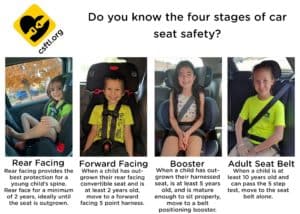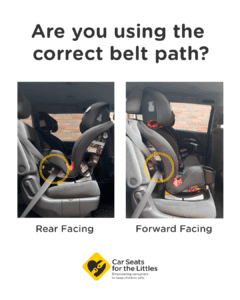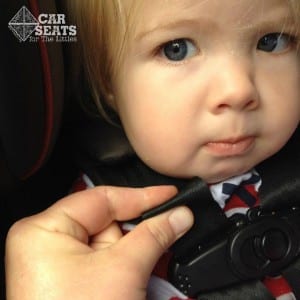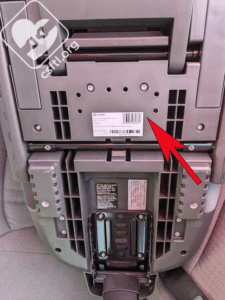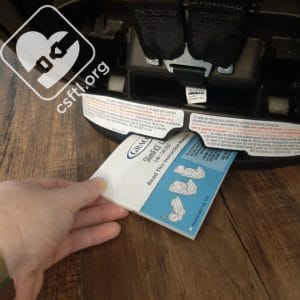Whether you’re a brand new parent or have a minivan full of Littles, it can never hurt to review the basics of car seat safety. Take a few moments to check all of these in regards to your child’s car seat – it might just save their life.
Select the Right Car Seat or Booster Seat for your Child
Kids should ride rear facing until they are at least 2 years old, ideally until they are 3-4 years old. Best practice has them riding forward facing in a 5 point harness until they are at least 5 years old, and riding in a booster seat until they are 10-12 years old.
Use the Correct Belt Path to Install the Car Seat
With convertible and multimode seats the seat can be installed both rear and forward facing, which means there are two separate belt paths. Read the manual and look at the labels on the seat to ensure you are using the correct belt path for the direction of the seat. Installing a car seat with the wrong belt path is a very common mistake that can be deadly in a crash.
Check your Installation
Your child’s car seat should be installed so that there is less than 1 inch of movement side to side, and front to back when grasping at the belt path. That means where the seat belt or lower anchor connector strap feeds through the car seat. That is the only place you need to test for movement, not the top of the car seat.
Attach the Top Tether (Forward Facing Only)
When installing a forward facing harnessed car seat, always use a tether if one is available. The tether reduces forward movement for the child’s head and neck up to 6″ in a crash; so reconfigure seats if necessary so all forward facing kids are in a vehicle seat with a tether anchor.
Adjust the Harness to the Correct Height for your Child
When using a 5 point harness, the straps should be positioned at or below the child’s shoulders for rear facing; at or above the child’s shoulders for forward facing.
Make Sure the Harness Straps are Tight Enough
Do the pinch test: pinch the straps vertically at the collar bone. If you can grab excess slack between your fingers and pinch it, the straps are too loose.
Positioned the Chest Clip Properly
The chest clip is designed to keep the straps in position over the torso before a crash happens. It must be placed on child’s sternum, at the nipple or armpit level.
Check the Date of Manufacture
Car seats expire anywhere from 4-12 years from the time they were manufactured. This time frame varies depending on the manufacturer, but plastics break down over time and an expired car seat may not protect your child adequately in a crash. Read more about car seat expiration here.
Remove Bulky Coats Before Buckling your Child
Bulky coats put extra space between the child and the harness which will compress immediately in a crash and mean more distance the child’s body moves before coming to a stop. Remove coats before buckling up, they can be worn backwards over the harness, or use blankets in the car instead. Read more about safe winter options for the car.
Crash Replacement
If you were involved in a car crash, chances are, even if the crash was minor, and even if the children were not in the car, the car seats or booster seats may need to be replaced. Check your car seat manual to determine the rules for your seat. You can find more information about accidents and replacing your seats here.
Read the Manual
We know, we know. The manual seems long, it’s not always the most interesting read, it’s full of warnings…. but we promise, this manual is one you must read. Your car seat’s manual holds the keys to making sure your child is as safe as they canbe in your vehicle. It’s worth the read. If you have misplaced your manual, contact the car seat manufacturer for a replacement right away.These are just a few important items to note when selecting and installing the correct seat and harnessing your child in that seat. CSFTL always recommends reading the car seat and vehicle manual prior to using any seat, and visiting a CPST in person whenever your child is moving to a new seat, a new vehicle, or the next stage.
Originally written by Emma Douglas. Edits maintained by CSFTL.

